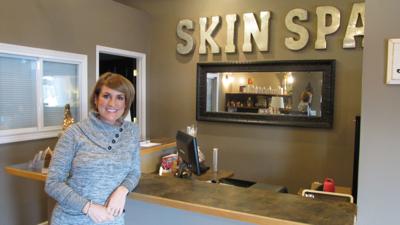Indoor tanning includes utilizing synthetic sources of ultraviolet (UV) radiation, corresponding to tanning beds, sunbeds, or tanning cubicles, to realize a tan. While some people go for indoor tanning for cosmetic causes, it is essential to be aware of the potential dangers related to this follow. Here's an in depth overview of the ins and outs of indoor tanning:
The Process:
Tanning Beds: Tanning beds emit UV radiation, primarily UVA and UVB rays, which simulate the solar's pure gentle. UVA rays penetrate the pores and skin deeply, whereas UVB rays have an effect on the floor layers, resulting in the manufacturing of melanin and the darkening of the skin.
Tanning Lotions: Some individuals use indoor tanning lotions or accelerators that contain ingredients to reinforce melanin manufacturing, doubtlessly leading to a faster and darker tan. These lotions often comprise moisturizers and bronzers.
Risks and Concerns:
Skin Cancer: The most vital threat related to indoor tanning is an increased danger of pores and skin most cancers, including melanoma, squamous cell carcinoma, and basal cell carcinoma. Even occasional use of tanning beds can significantly elevate this threat.
Premature Aging: UV radiation can speed up the getting older strategy of the pores and skin, resulting in wrinkles, nice lines, age spots, and lack of skin elasticity.
Eye Damage: UV rays can harm the eyes, rising the chance of cataracts, macular degeneration, and different eye circumstances.
Weakened Immune System: Excessive UV exposure weakens the immune system, making it tougher for the body to struggle off diseases and infections.
https://tanningspanyc.com/ : Some people might develop a psychological dependence on indoor tanning, leading to excessive and harmful tanning behaviors.
Regulations and Guidelines:
Age Restrictions: Many nations and states have age restrictions for indoor tanning, aiming to protect minors from the dangers related to UV publicity.
Warning Labels: Tanning beds are often required to have warning labels concerning the potential dangers of indoor tanning.

Safer Alternatives:
Sunless Tanning Products: Sunless tanning lotions, sprays, and creams provide a tan without UV publicity. They comprise dihydroxyacetone (DHA), which interacts with the skin to produce a temporary tan.
Professional Spray Tanning: Some salons provide spray tanning services where a technician applies a tanning solution evenly on the skin, offering a tan with out UV publicity.
Conclusion:
While indoor tanning may offer a brief cosmetic resolution for achieving a tan, the related health dangers can't be ignored. It's essential to prioritize your skin's well being and consider safer alternate options if you desire a tan. Protecting your skin from excessive solar exposure, sporting sunscreen, and embracing pure pores and skin tones are important for overall well-being..
